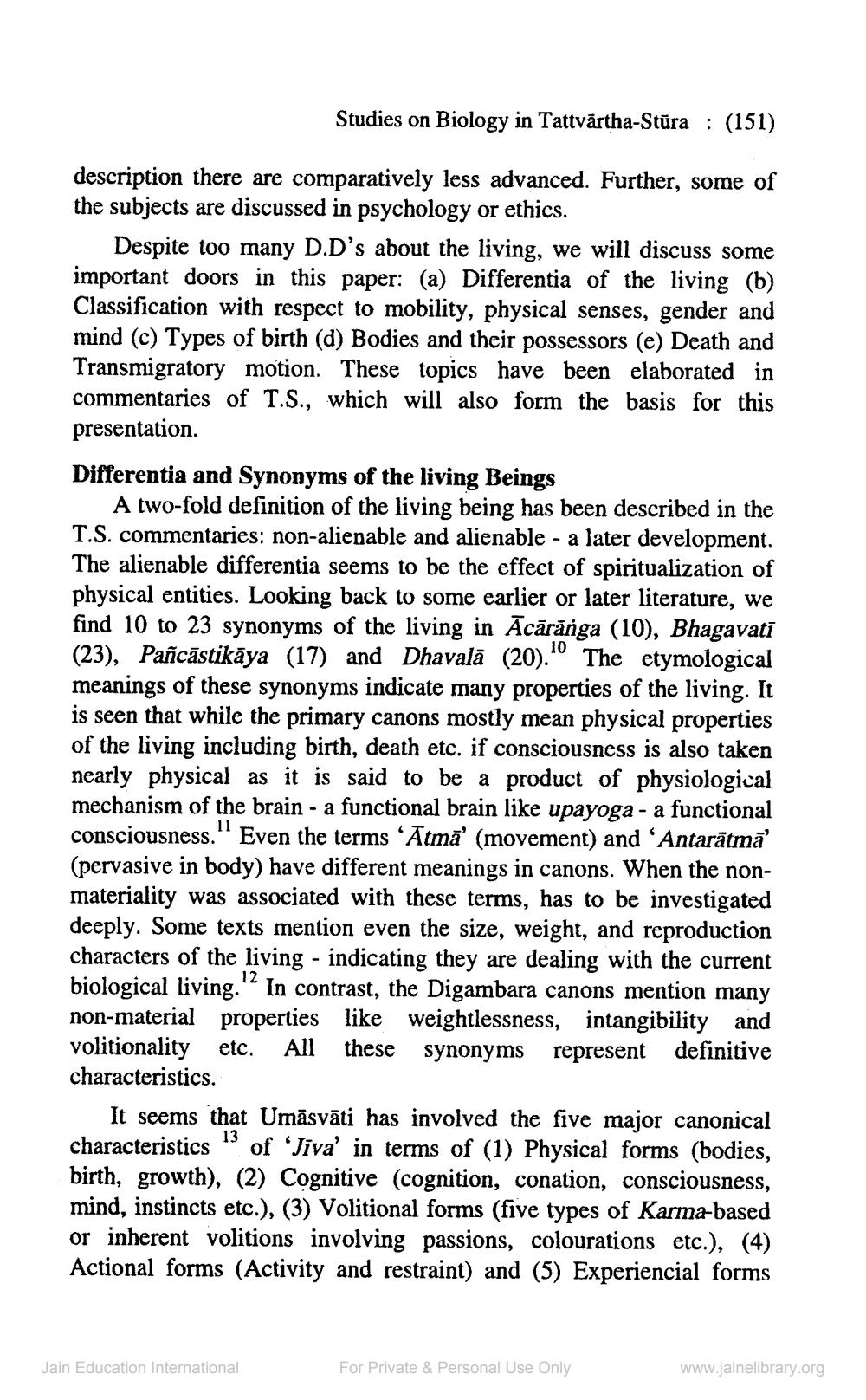________________
Studies on Biology in Tattvārtha-Stūra : (151)
description there are comparatively less advanced. Further, some of the subjects are discussed in psychology or ethics.
Despite too many D.D's about the living, we will discuss some important doors in this paper: (a) Differentia of the living (b) Classification with respect to mobility, physical senses, gender and mind (c) Types of birth (d) Bodies and their possessors (e) Death and Transmigratory motion. These topics have been elaborated in commentaries of T.S., which will also form the basis for this presentation. Differentia and Synonyms of the living Beings
A two-fold definition of the living being has been described in the T.S. commentaries: non-alienable and alienable - a later development. The alienable differentia seems to be the effect of spiritualization of physical entities. Looking back to some earlier or later literature, we find 10 to 23 synonyms of the living in Ācārānga (10), Bhagavati (23), Pañcāstikāya (17) and Dhavalā (20). The etymological meanings of these synonyms indicate many properties of the living. It is seen that while the primary canons mostly mean physical properties of the living including birth, death etc. if consciousness is also taken nearly physical as it is said to be a product of physiological mechanism of the brain - a functional brain like upayoga - a functional consciousness." Even the terms 'Atmă' (movement) and 'Antarātmā” (pervasive in body) have different meanings in canons. When the nonmateriality was associated with these terms, has to be investigated deeply. Some texts mention even the size, weight, and reproduction characters of the living - indicating they are dealing with the current biological living."? In contrast, the Digambara canons mention many non-material properties like weightlessness, intangibility and volitionality etc. All these synonyms represent definitive characteristics.
It seems that Umāsvāti has involved the five major canonical characteristics" of 'Jiva in terms of (1) Physical forms (bodies, birth, growth), (2) Cognitive (cognition, conation, consciousness, mind, instincts etc.), (3) Volitional forms (five types of Karma-based or inherent volitions involving passions, colourations etc.), (4) Actional forms (Activity and restraint) and (5) Experiencial forms
Jain Education International
For Private & Personal Use Only
www.jainelibrary.org




